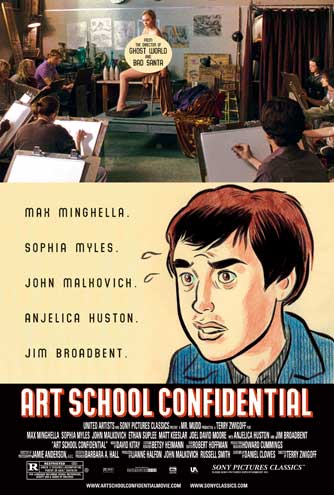2006
SUPERMAN RETURNS
After the Superman film franchise reached its nadir in the late 1980s, several attempts were made to get Clark Kent back on the big screen. None of them reached fruition until 2006 with Superman Returns.
To direct, Warner Brothers went with Bryan Singer. Singer had directed the first two films in the X-Men series, and was supposed to direct the third. He chose to work on this film instead.
Singer wanted an unknown to play Superman, so he went with Brandon Routh. Kevin Spacey was picked for the villainous Lex Luthor and Kate Bosworth portrayed Lois Lane. Spacey had worked with Singer previously on The Usual Suspects, a role which won Spacey the Oscar for Best Supporting Actor. Singer also reused another actor he had worked with, James Marsden. Marsden portrayed Cyclops in all three X-Men films, and in Superman Returns, he plays Lois Lane’s husband.
This film is an interesting example of continuity. It was the fifth film in the series, but it only took into consideration the events of the first two movies, while ignoring the last two. This is probably due to the poor quality of the third and fourth installments in the Superman franchise.
However, this led to some timeline issues. The first two films were set in the late 1970s/early 1980s. This film is supposed to take place only a few years after Superman II, and yet it clearly takes place in the 2000s.
Another odd thing about this film is the use of stock footage. Singer used previously filmed footage of the deceased Marlon Brando so that he could once again portray Jor-El, Superman’s real father.
Superman Returns was somewhat of a disappointment. It failed to reach $400 million worldwide on a budget of about $200 million.
This was a decent outing, but not the massive hit WB was hoping for. However, it does have a respectable score of 75% on Rotten Tomatoes.
Part of the problem is this film spent too much time looking back to the previous Superman films. It was meant mainly as an homage, but it doesn’t work on its own.
It rehashed too many elements of what came before. For example, we once again see Lex Luthor attempt a land scheme.
A lack of action was also a perceived problem with the film. Many fans claimed that Superman never punches anyone. This issue was fixed, perhaps to the point of overcompensation, in the 2013 reboot Man of Steel.
Fans also complained about aspects of the story that didn’t jive with their perception of Superman. For example, Superman leaves Earth for five years, even though he has a son.
Many said that Clark Kent shouldn’t be a “deadbeat dad”, although to be fair, he wasn’t aware that he had a child until he came back. Superman also tries to hit on Lois while she is married, and uses his X-ray vision to spy on her.
The film was misguided from the beginning. The original Superman series was successful in a vastly different era. Modern audiences flock to superhero films starring the snarky Spiderman or the gritty X-Men, not a boy scout like Superman is often portrayed.
The successful comic films also usually have a charismatic lead like Hugh Jackman. In comparison, Brandon Routh has little screen presence.
Despite the lukewarm reception to Superman Returns, a sequel was at one point planned. It was supposed to come out in the summer of 2009. However, these plans were scrapped and WB went with a reboot instead.
X-MEN: THE LAST STAND
Singer leaving the X-Men franchise left FOX frantically searching for a replacement director for X-Men: The Last Stand. They chose Brett Ratner, best known for making Rush Hour, Rush Hour 2, and Red Dragon. This was a poor choice.
Joss Whedon, who has written X-Men comics, was given the chance to direct. However, he turned it down because he was working on a Wonder Woman film that never materialized. A Joss Whedon X-Men film really could have been something special.
Matthew Vaughn was also extended the offer, but he declined as well. He would eventually direct X-Men: First Class in 2011.
Singer’s script had a few major differences from the final version. One is that Emma Frost was going to be included as a villain. She isn’t in the final film, but ended up in X-Men: First Class. Gambit, a very popular X-Man, was also going to appear. He was finally shown on screen in X-Men Origins: Wolverine.
Financially speaking, the third X-Men was a success. In fact, it was the highest grossing in the series (and still is to this day). Globally, it made $459 million, while costing $210 million to make.
` However, the film didn’t do as well with critics and X-Men fans. The Metacritic score is 58 and the RT rating is a similar 57%.
Many comic book fans were not happy with the film for various reasons. Cyclops, who had been shoved to the side throughout the first two movies, was unceremoniously killed off after about 5 minutes of screen time. They also killed off another crucial character, Professor X.
The Last Stand just tried to do too much. There were too many plot lines and characters jammed in. The Phoenix saga and the cure storyline could have both carried a movie on their own. Angel is a cool character, but he really didn’t have much relevance to the overall plot. The same goes for Juggernaut.
ART SCHOOL CONFIDENTIAL
Art School Confidential was the second film based on the work of Daniel Clowes, following the underrated Ghost World. Terry Zwigoff was the director of both films. This one starred Max Minghella, John Malkovich, Anjelica Houston, and Jim Broadbent.
The movie wasn’t much of a success. It only made $3.3 million at the box office, less than its $5 million budget. The reviews weren’t good either. It has a 36% on Rotten Tomatoes and 54 out of 100 on Metacritic.



No comments:
Post a Comment